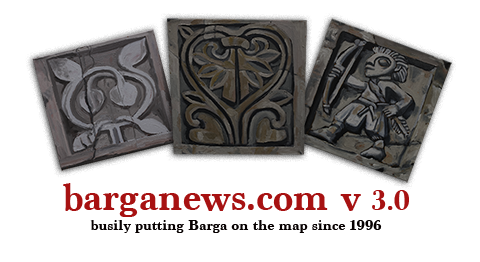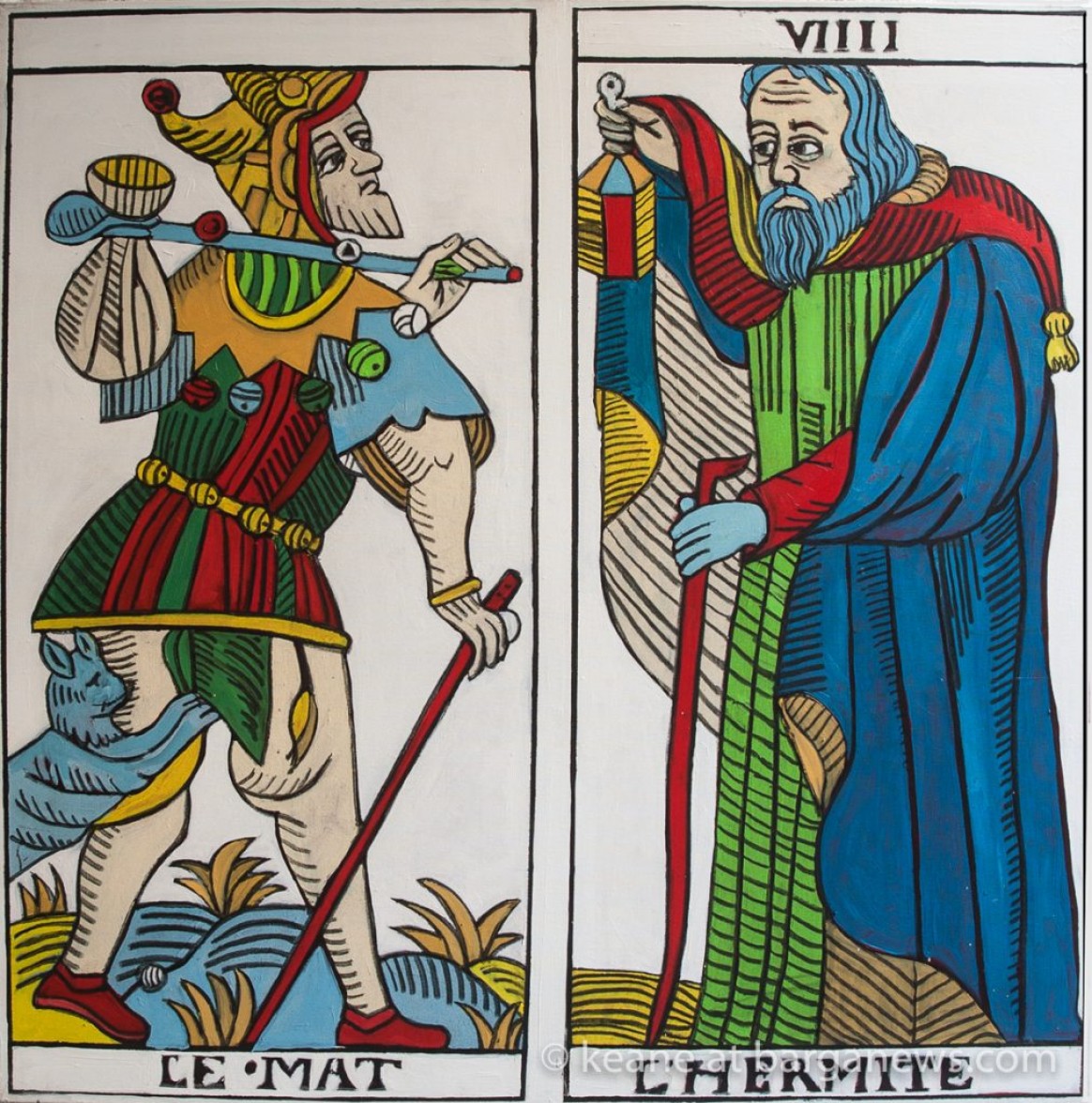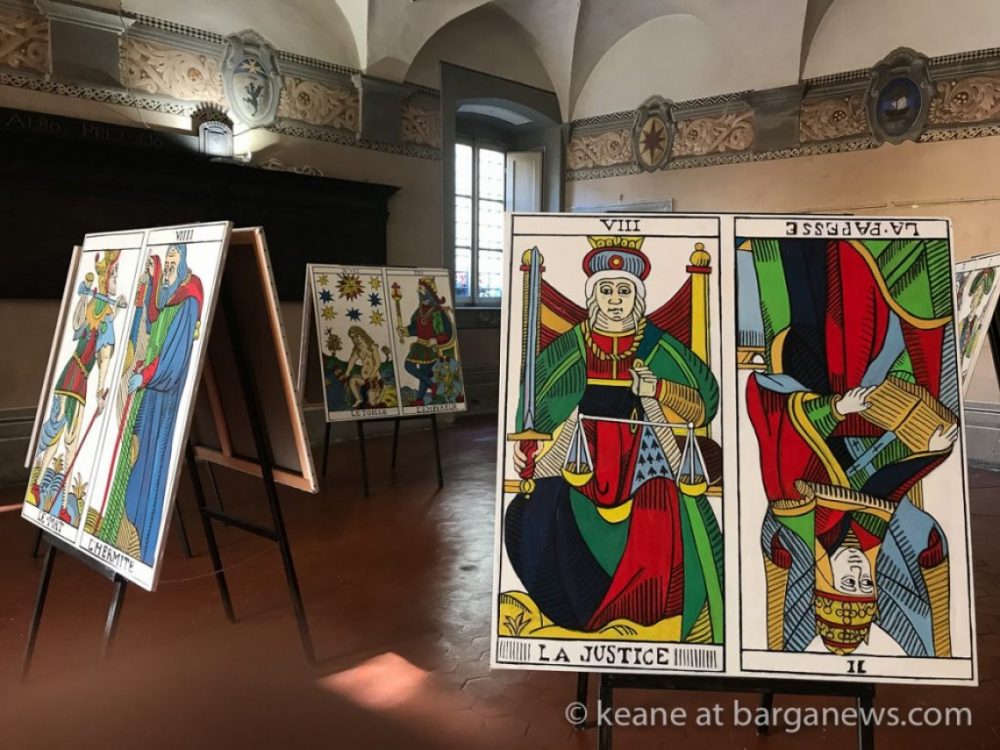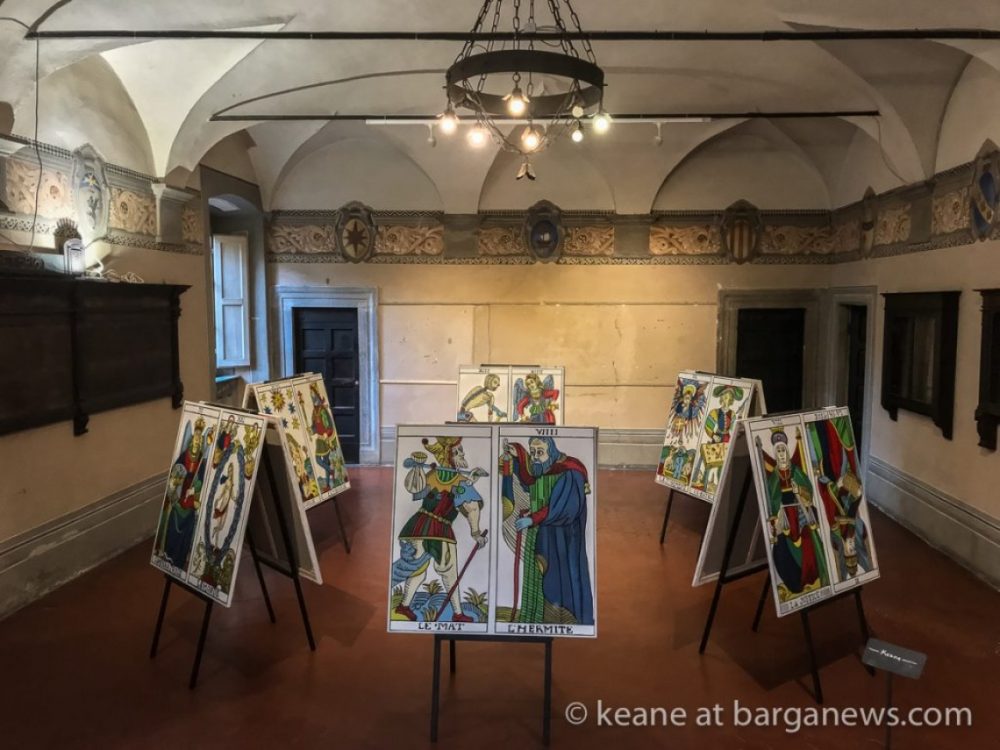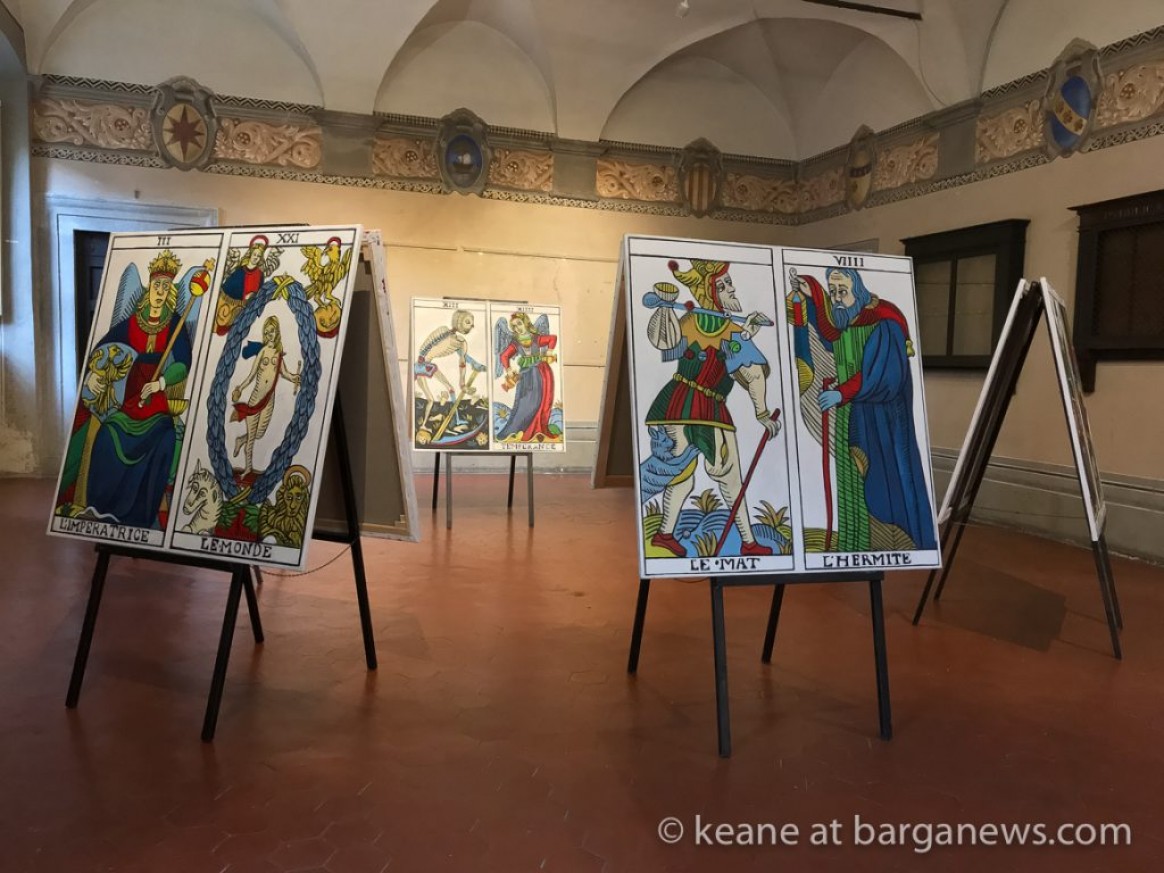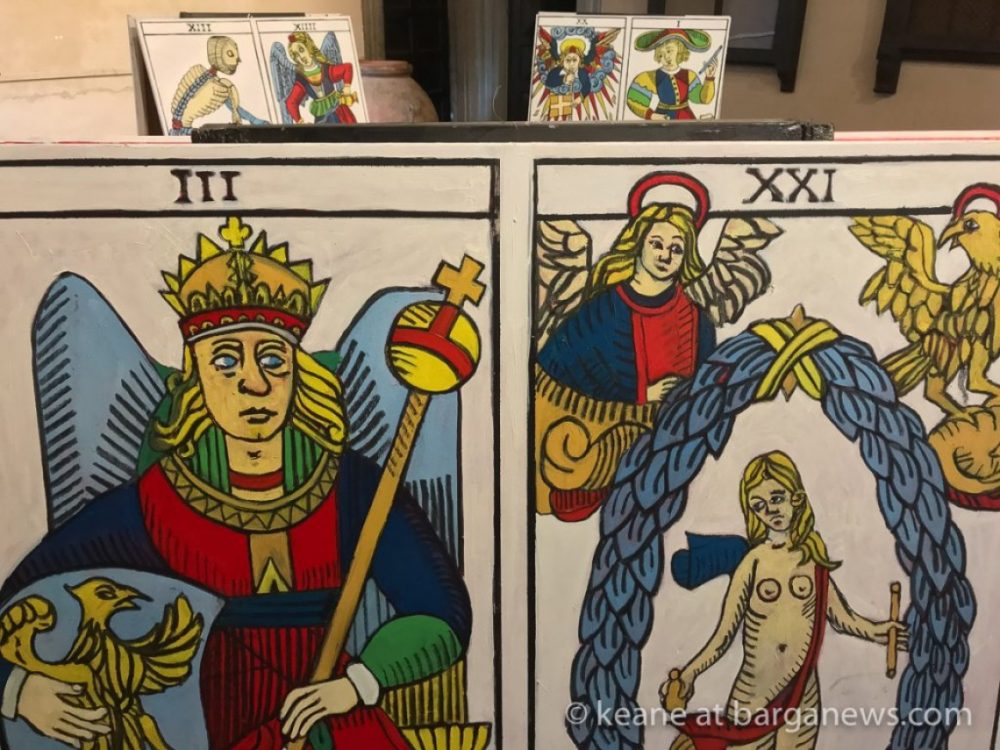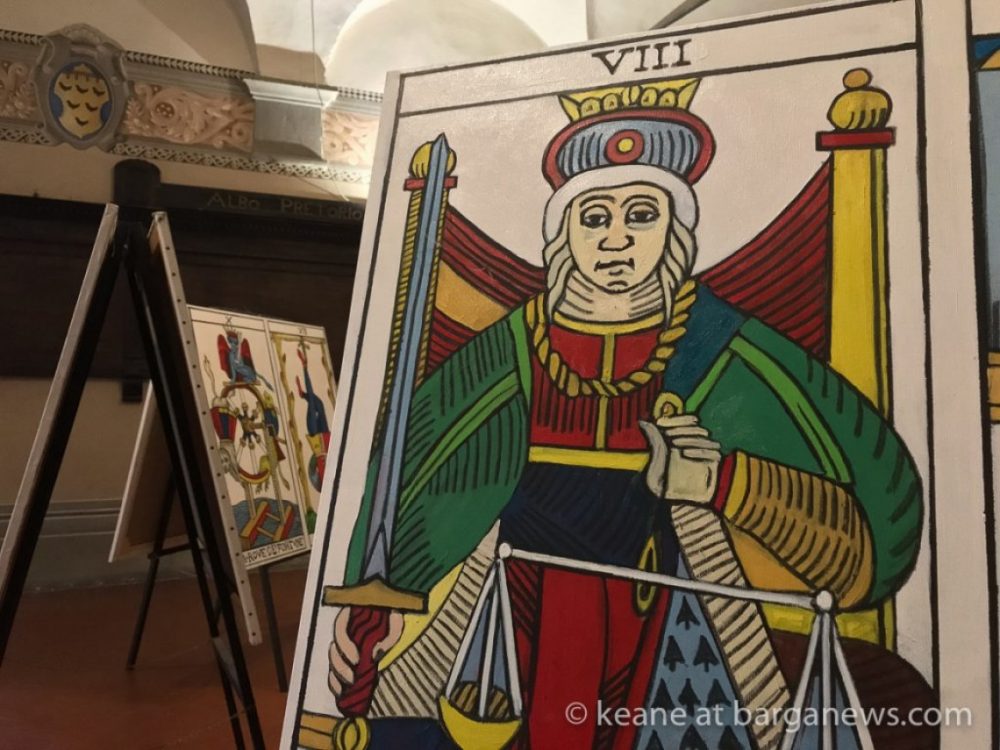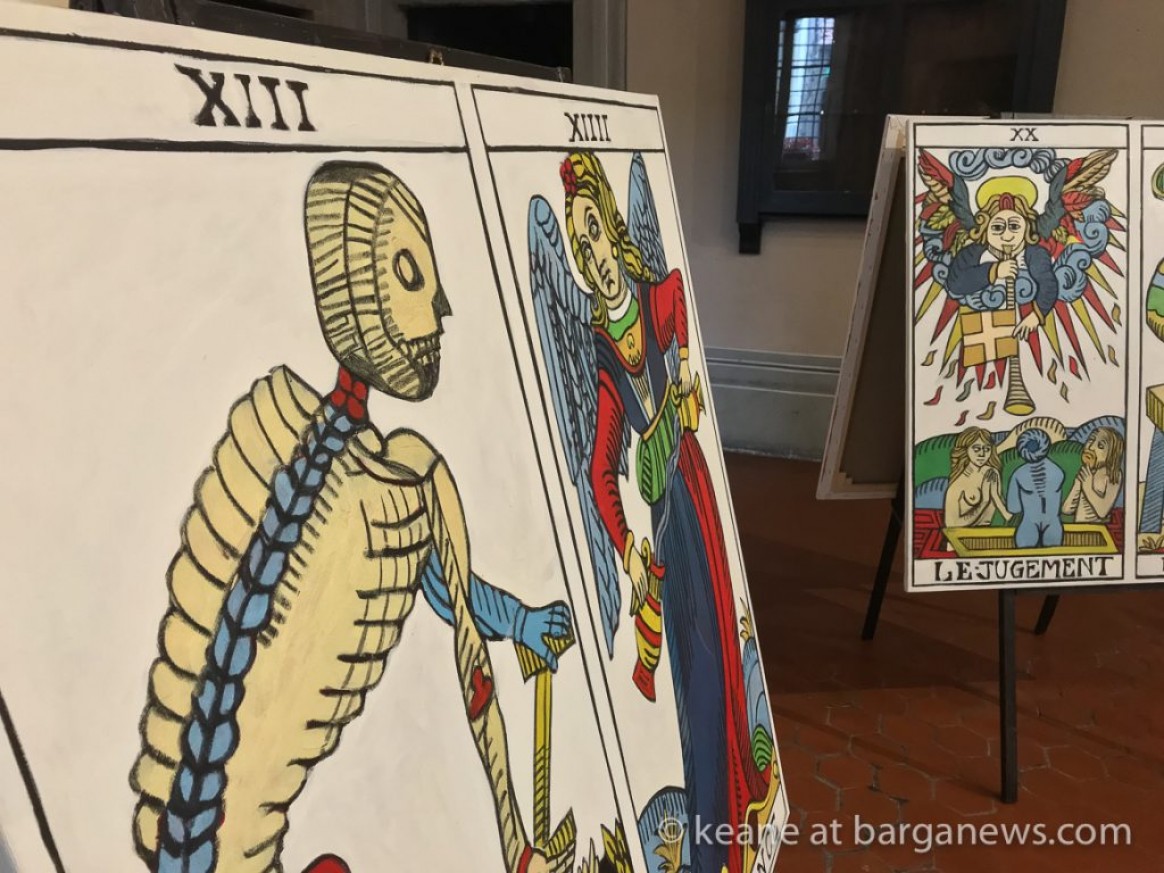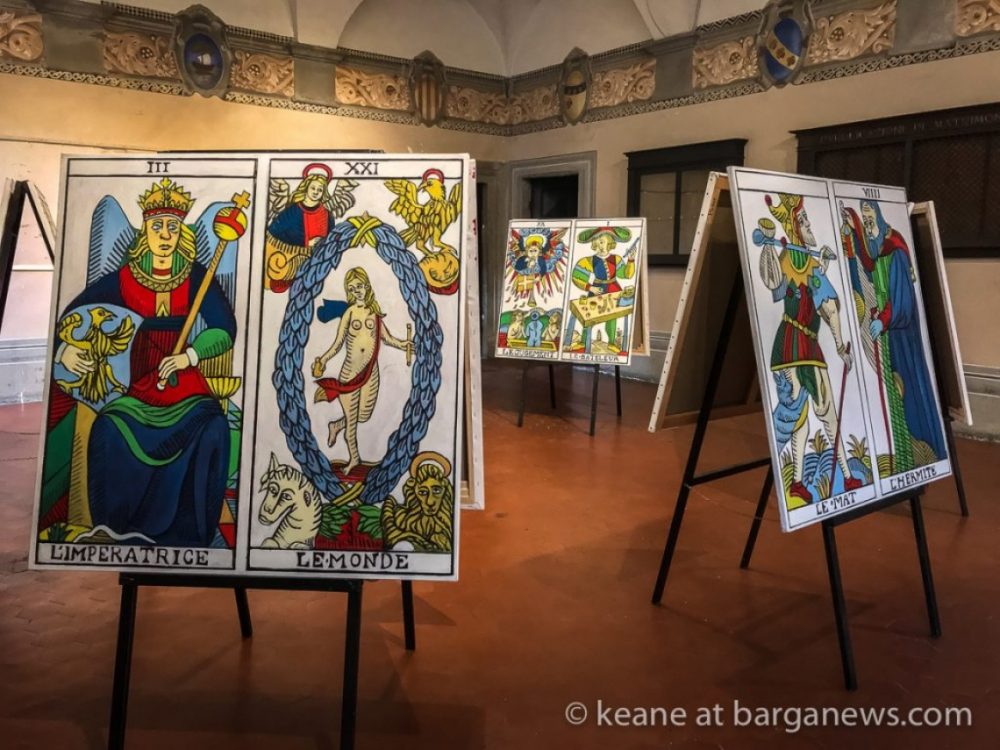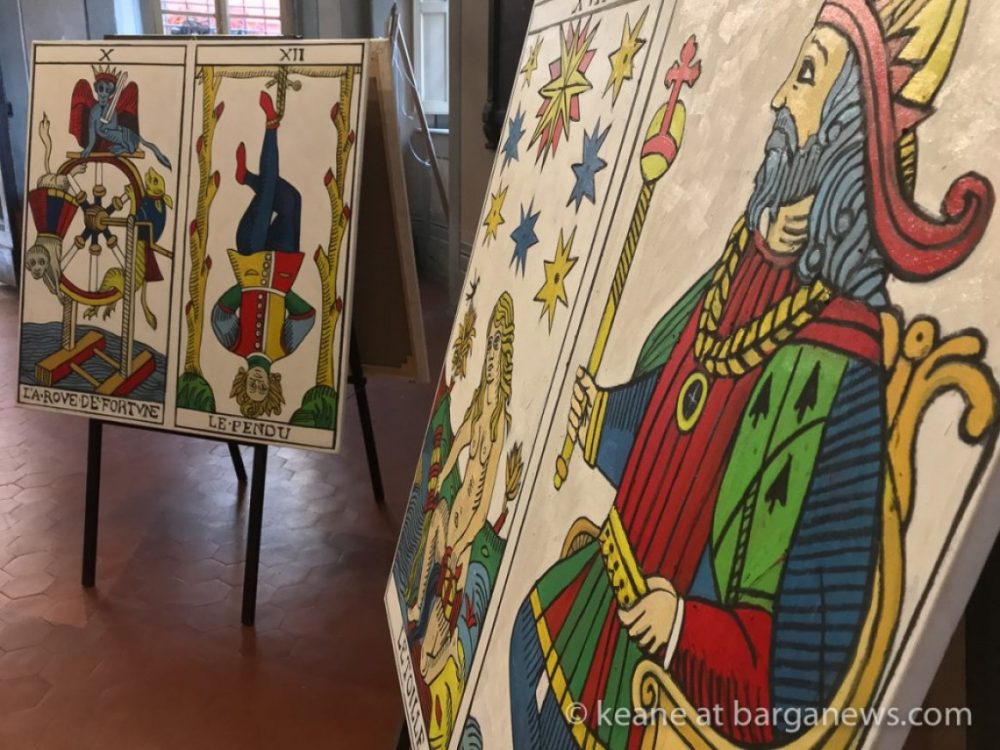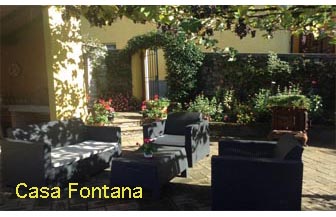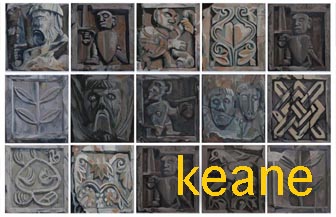Over the past thirty years Keane has been making images based on culture and events here in Barga – The Biroldo paintings, The Duomo of Barga paintings, The Nuns of Barga and The walls of Barga were just five of those local based projects.
Four times during those thirty years he also started to make images and work about the card players to be found in local bars playing with their fascinating sets of cards, the designs of which have remained more or less unchanged for centuries but each time he was not able to progress beyond just a few unrelated images. Somehow the project never took off — that is until he read an article which managed to tie in all the loose ends.
Barga, in it’s heyday, was a stronghold of The Medici’s Florence. Against the often fiercely independent republic of Lucca, and the Dukes of Este, or ubiquitous Visconti, it was known as Barga Fiorentina
The city was also well known during the Middle Ages for the manufacture of silk threads which were exported to major centres such as Florence.
The article mentioned Florentine silk dealers Lorenzo di Bartolo and Matteo di Zanobi, who in a side business also traded with playing cards between 1431-1460. Through the silk dealer records we know also about Florentine playing card suppliers, likely producing artists. Antonio di Dino, Antonio di Simone and Niccolo Calvello (who sold more than 3500 decks to the silk dealers) were the major suppliers till c. 1450-1456. source
So it was quite possible that during those times people were playing here in Barga with some the original Tarot or Trionfi packs of cards.
The Tarot Cards
The tarot first known as trionfi and later as tarocchi is a pack of playing cards (most commonly numbering 78), used from the mid-15th century in various parts of Europe to play a group of card games such as Italian tarocchini and French tarot. From the late 18th century until the present time the tarot has also found use by mystics and occultists for divination.
Italy is said to be the birthplace of the tarot, which according to playing-card historians was originally a card game invented in the fifteenth century and whose principal innovation was the introduction of trumps into Western European card-gaming.
The symbolism found on some early tarot cards has led many people to believe that tarot cards are in fact the expression of ancient streams of wisdom… the eternal, esoteric and holy tradition itself.
Following this belief, modern tarot packs draw upon the teachings of a tremendous range of traditions, including Kabbalah, Western esotericism and alchemy, Buddhism, Sufism, Egyptian initiations, mystical Christianity, Gnosticism, Neoplatonism, Celtic mythology… and so on.
The Tarot of Marseille restored by Philippe Camoin and Alexandre Jodorowsky
Founded in 1760 by Nicolas Conver who in the same year engraved his famous Tarot de Marseille, the Conver Factory in Marseilles, France became by marriage the Camion House.
Keeper of the Tarot of Marseilles tradition for more than two centuries, the Camoin House was forced by the industrial revolution to change the colours of the Tarot. After long research work, Philippe Camoin and Alexandre Jodorowsky rebuilt the colours and symbols of the Tarot. Some of them were incomplete or had already disappeared by the 18th century.
“Almost all of the Tarots in the world are copied on the pattern of the Tarot de Marseille”, observes Philippe Camoin, in the light of numerous irrefutable signs which he had gathered and uncovered in the course of his investigations of the Tarot de Marseille. The essential goal of this research was to rediscover the symbols, the purpose, and the primary meaning of this monument of Western culture, in a way that the language ws equally intelligible to our friends in the East. It is helpful to quote here H.P. Blavatsky: “The Tarot is the key to all of Western esotericism.”
The most impressive new finding are the account books of two otherwise rather unknown Florentine silk dealers Lorenzo di Bartolo and Matteo di Zanobi, who in a side business also traded with playing cards between 1431-1460. The records open the field of the cheap decks produced in Florence, which is quite different to the earlier known high-price Trionfi card records mainly from the Ferrarese court. Cheapest common playing cards have 1-2 Florentine soldi prices, cheapest Trionfi decks take usually 9 soldi (mentioned for the first time in 1449) and only in two cases a little less. From the price one possible may conclude, that Trionfi decks still were expensive for the middle cass, but not totally out of reach in 1449.
Through the silk dealer records we know also about Florentine playing card suppliers, likely producing artists. Antonio di Dino (mostly middle class playing cards, usually 5 soldi and Trionfi cards later), Antonio di Simone (expensive cards only, usually c. 9 soldi, no Trionfi cards) and Niccolo Calvello (the cheapest playing cards, he sold more than 3500 decks to the silk dealers) are the major suppliers till c. 1450-1456, dividing then the business in three classes for this period. In 1450 Matteo Ballerini appears in the Silk dealer’s playing card business and he becomes the major supplier for the the time 1453-1460 – source
